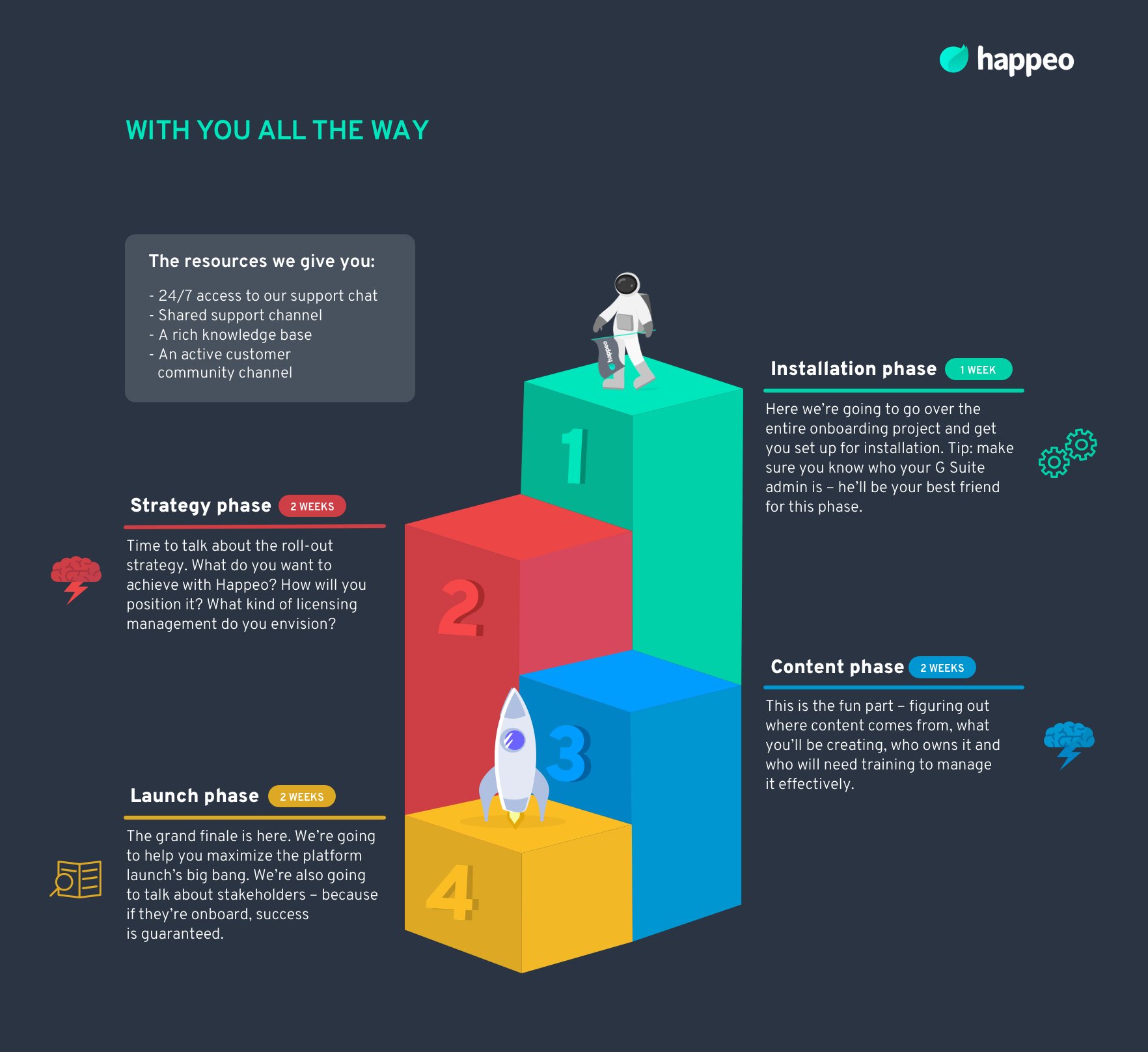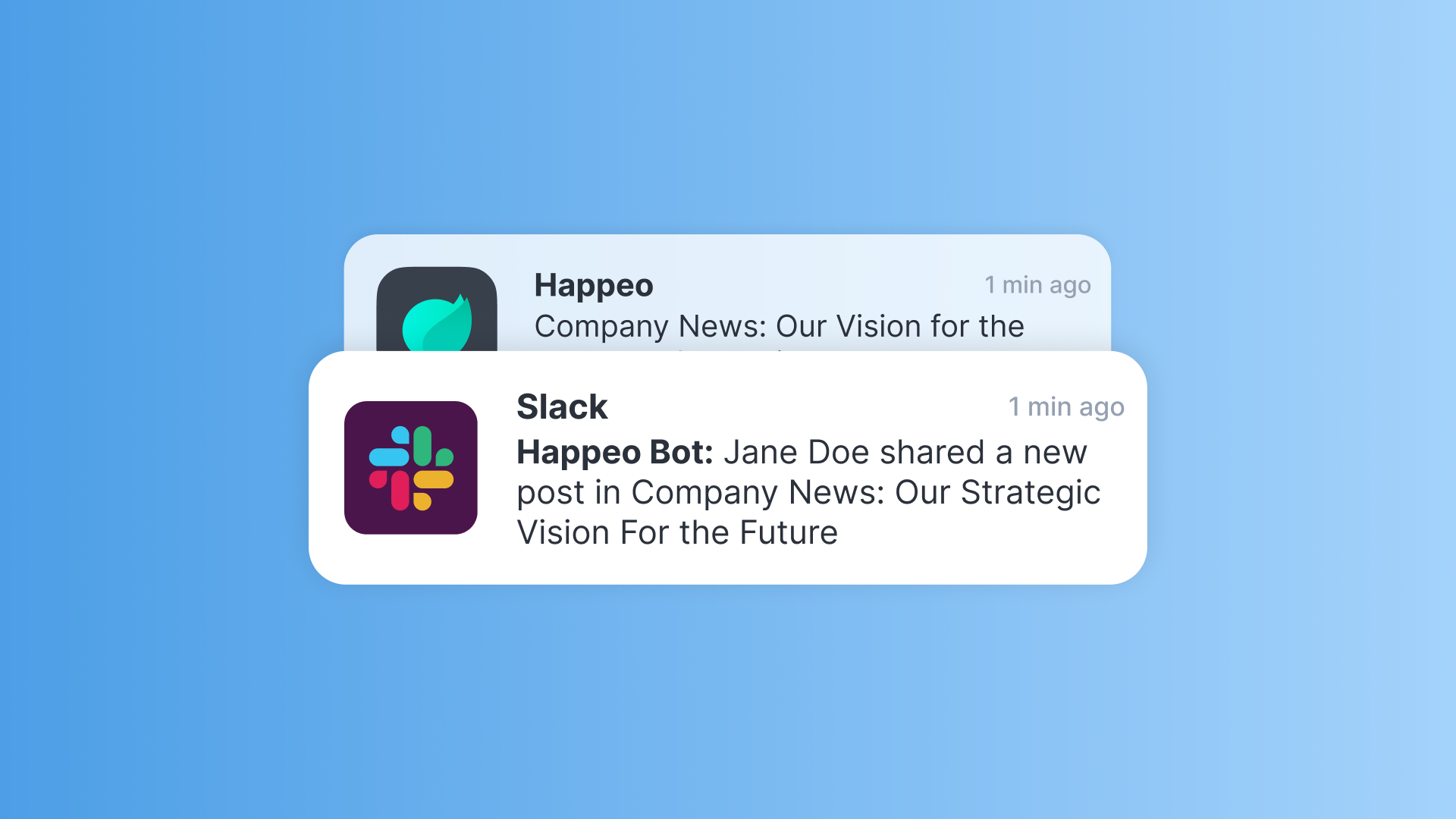
Internal Communications Quick guides
Infographic: How to launch intranet with Happeo onboarding

3 mins read
Start building your digital home with Happeo
Request a demoInternal Communications Quick guides
Product
Features
Solutions
Happeo for
Use cases
Resources
Explore
Support
Happeo For
Use cases
Comparisons
Explore
Support
Recent

Jonathan Davies
3 mins read
The launch of your social intranet is the culmination of a process that often involved many trials, tribulations and layers of approval.
When the time is nigh for Beccy to finally post her first values-driven campaign material, there’s almost a sigh of relief. “Finally, our Internal Comms is sorted.” The installation process went well, IT handed full ownership of the platform over to Internal Communications and a ton of content was prepared in advance, so the launch isn’t the equivalent of rolling out the red carpet to the Sahara desert. But months later, the project is still a failure. Why? Because the weekly use rate - or adoption rate if you will - hovers around the global average mark of 31%. In other words: 69% of the money you pay on those licence fees, is wasted.
So where did it all go wrong? The example above shows something that we consider one of the most important parts of launching a social intranet: proper onboarding. No matter how well you prepare your launch, vendors have an overview of the successes of all their clients, so their insight is key. Beccy and her fictional company’s social intranet didn’t fail because it didn’t have a strategy. Or because there was no content. Or for that matter, because the platform itself wasn’t easy and fun to use. It failed because there was no leadership support. You can’t create engagement if it’s only Internal Comms sending - and responding to - messages; leadership should use the platform. But, like Beccy’s company, each (real) company is unique, so you’ll have your own unique challenges. The thing is, the company providing your social intranet platform will have seen similar cases before.
What should you have done? Proactively pull the vendor by the sleeve? Beg them for help through a chat bot or email? Fly them over to provide training? Well, no. See, in our eyes, it isn’t up to you. It should be up to the vendor. Continued success is incredibly important for continuous business, so if a vendor isn’t investing in your success, it means they see you as “hot cakes” – not valuable by the time it cools down; onto the next they go. Smaller organizations can get away without a detailed stakeholder-approach plan, simply because the lines are shorter and more intimate. Large organizations, on the other hand, need a plan.
To do something about this, we implemented a standard customer onboarding approach to everyone who purchases the “recommended” package or up. Just take a peek at the infographic below:

The first phase is the expected, “technical” implementation part (honestly, it doesn’t take more than 10 minutes to install but let’s call it technical!), phases two and four are where the collaboration-magic happens, where phases one and three are largely in your control.
Phase two is where we really start figuring out what you want to accomplish. What kind of change are you trying to bring to your company with a social intranet? Beccy had it figured out, but what if you just need advice on making it measurable? Or perhaps just an outside set of eyes? You should expect your vendor to proactively approach you and offer help with this.
Phase three is where you wave the wand, and we help you with the magic spell. It's time to think about the content that will populate the platform - which is completely your expertise - but then also implementing a bottom-up approach to that. How do we get other stakeholders to keep wanting to produce content themselves?
Then there’s phase four – the launch button. Often you’ll have intense contact with a vendor at this part of the cycle, but that will be on topics concerning the platform or the roll-out strategy. Rarely does it concern the internal dynamics of your company; and that’s where mistakes happen. Make sure you’ve mapped out who you need on your side, and ask for help in figuring out how to get there. People that do Customer Success often have a background in sales, so they’ll be able to help you “sell” support for your social intranet internally. Our tip: start with getting one leader on your side, then work your way up from there. Divide and conquer.
Touch points with your vendor are critical during the four phases of launch. Maximizing the big bang is what gets the momentum needed to swing the pendulum in your favor. After that comes ongoing support – you should be in touch at least once a quarter, and continue to execute communication on the platform, backed by a clear strategy. This is one of the reasons why our weekly-usage rate average across all our customers is 78%.
